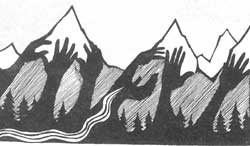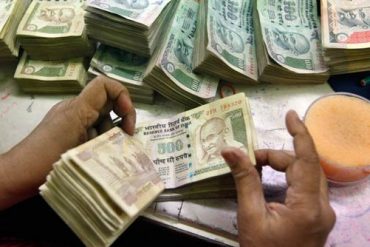Higher temperatures are being recorded in Himalayan altitudes which had not seen the mercury rise so much before. Changes in temperature zones are causing migration of plants and endemic animal populations to higher altitudes and so much more.
The threat posed to these cool climes is visible out there as global warming is here to stay. The question that haunts is whether man can halt climate change or adapt fast enough to sustain livelihoods in these badlands.

As the growing demand for power and minerals like limestone gets intense; it is the Himalayan region that is facing the biggest onslaught on its rich resources. Globally rising temperatures is hitting livelihood patterns and big money is buying out scarce agricultural lands and turning it into real estate.
Unmindful of the weather changes coming about, big business, many of them illegally continue to flourish in the Himalayan belt with patronage of a unholy politician-bureaucrat nexus.
The Himachal Pradesh High Court recently came out with a landmark judgment, where it imposed a $ 2 million fine on a cement factory for having grossly violated environment laws and also asked for dismantling of a small thermal plant that had been set up without proper authorization.
The development policy of most states in Himalayan belt is centered around developing every unit of potential hydropower available. Rich deposits of limestone is busy business for cement industry and scenic locales are attracting real estate projects, much to the disadvantage of local communities, their economy and the ecology.
Thriving agricultural economies are being mortgaged for setting up special economic zones which in turn are displacing local populations.
People displaced because of large tracts of highly productive land being inundated due to construction of large dams such as Bhakra, Kol, Pandoh and Pong have even faced the government apathy in carrying out rehabilitation and compensation programs.

Tehri Dam in Uttarakhand also led to large scale displacement of locals. Narendra Negi, a popular folk singer of Uttarakhand, has recorded the tragedy, the pain and grief caused by displacement in a local song that went viral. Across the Himalayas over 1000 sites have been identified for setting up hydropower projects.
Age old land laws are being evoked to usurp farm land that is handed out to an all powerful land mafia for turning it into a profitable real estate property.
Mountain people are being marginalized the world over and the case is no different in the India sub-continent.
Whereas the highly polluting cement industry is playing havoc with the otherwise green valleys, hydropower projects are encroaching upon scarce water resources in the mountains.
The governments of Uttarakhand, Jammu & Kashmir and Himachal Pradesh are facing criticisms from the environmentalists for many years now over these issues.
The number of cement plants concentrated in a small tract of Himachal Pradesh has created havoc. Violent mining has destroyed the ecosystem that was thriving in these Himalayan lands turning them into badlands.
Nibbling away at the forest cover of the mountains is another threat the Himalayas face that if not checked would in time turn the lush landscapes barren.
Though the Himalayas provide abundant spots for setting up for hydro electric projects but the governments need to show caution while tapping this readily available and cheap power source.
Excessive tapping of the natural resources can cause huge imbalances in the region and destroy the livelihood means of the local inhabitants. Increase in the country’s energy requirements, only adds more pressure on the mountain environment as huge profits are at stake. The cost are also high and could leave the Himalayas permanently impaired of its cool and conducive environment for ages.
Saving the ecology of Himalayan is paramount.
A mechanical engineering graduate with a post graduation in marketing and sales, Ashish has combined professional experience of more than 4 years.
Ashish is a great fan of Martin Scorsese. He loves to write poetry in his spare time.
He lives in Shimla.



